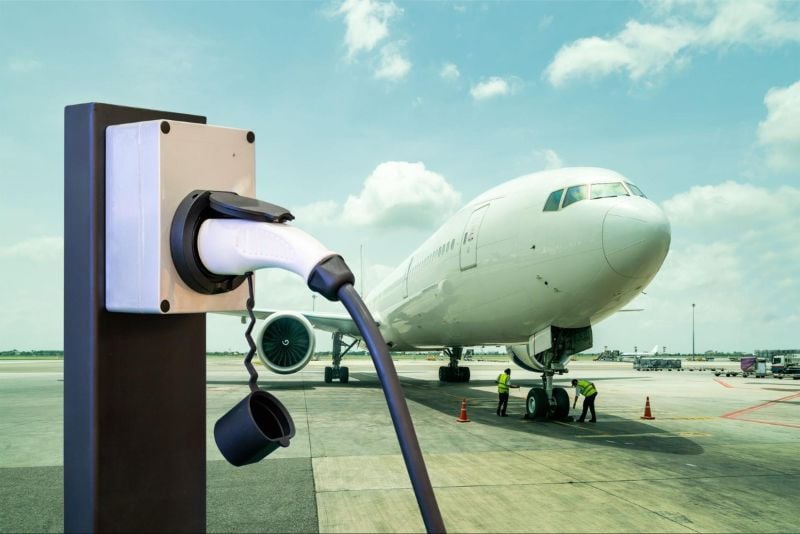CATL Condensed Battery Could Make Electric Aviation Possible
An energy density roughly twice that of conventional lithium-ion batteries could also improve EV range and performance.
China's Contemporary Amperex Technology (CATL) used the Auto Shanghai motor show to announce that it has developed a condensed battery. The battery has an energy density of up to 500 watt-hours per kilogram (Wh/kg) compared to 200 to 300 Wh/kg for conventional lithium-ion batteries. The company claims the new battery’s energy density could be high enough to allow the development of electrified passenger aircraft.
Electric aircraft. Image used courtesy of Adobe Stock
CATL was founded in 2011 and is considered the world's largest lithium-ion battery manufacturer. In 2022, the company held 37 percent of the global market share for electric vehicles (EVs) and 43.4 percent of the worldwide share of large-scale energy storage. CATL supplies Tesla with lithium-iron-phosphate (LFP) cells for its Shanghai plant in China, and Ford Motor Company has announced plans to construct a plant in Michigan to build LFP cells using technology licensed from CATL.
Solid State
Battery researchers worldwide have been working on solid-state electrolyte lithium-ion batteries that will produce energy densities between 400 and 600 Wh/kg. The solid electrolyte used in these batteries are typically made from ceramic or polymer materials, and the manufacturing issues are one area that has kept these batteries from reaching large-scale production.
CATL condensed battery. Image used courtesy of CATL
Condensed Matter
The CATL condensed battery (more properly called a condensed matter battery) uses a polymer gel-like electrolyte that adapts its mesh structure and adjusts its interactive forces among its polymer chins. The company claims that this improves the conductivity and lithium-ion transport within the electrolyte while also improving the stability of the microstructure, improving battery safety.
CATL, while not providing much detail, also claims that it is using an “ultra-high density cathode material,” new anode materials and separators, and a new manufacturing process that could allow series manufacturing to begin later this year. Costs for the new high-energy density battery were not discussed at the product reveal in Shanghai. During the presentation, a pouch and a prismatic cell configuration were on display.
EV Range
The first and most obvious use for a battery with such high energy density would be to increase the EV range. A 500 Wh/kg cell, replacing a 250 Wh/kg cell in a pack, would double the range an EV could travel with the same weight of batteries or reduce the pack's weight by half to achieve the same range. In other words, a current luxury EV that can travel 300 miles on a charge could now travel as much as 600 miles—a full day of driving without recharging. Alternatively, a small commuter EV could be made with much smaller and lighter batteries that would also be able to recharge more quickly during the day or overnight.
Electric Aviation
CATL is partnering with several companies to use the new condensed matter batteries to develop electric passenger aircraft. Until now, commercial lithium-ion batteries didn’t provide enough energy to make fully electrified aviation possible. By roughly doubling the energy density, however, CATL opens the possibility for short and medium-range aircraft that are powered entirely by batteries. Building batteries that meet aviation-grade safety and quality requirements has its challenges, and the battery giant views its new condensed battery as a breakthrough that will finally allow electrified aviation to move forward.








